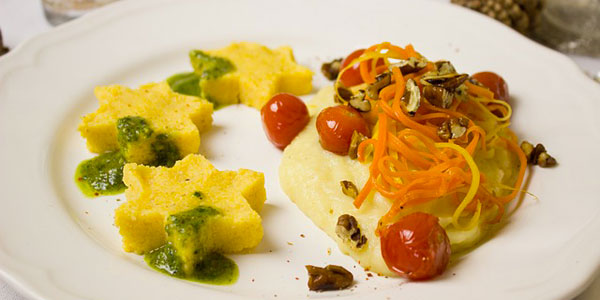Blog e Media Italian cooking
A dish with tradition - the original Italian polenta

The polenta hides an original Italian dish with a very long tradition. It is a mash prepared from corn-gourd, which is still popular throughout the country. Originally, however, the polenta originated from the northern regions of Italy such as Lombardy, Brescia, Piedmont, Veneto, Aosta, Friuli and Veneto. The tasty dish is widely spread in these parts of the country and it was very popular in the 16th century as a meal for the simple people. To this day, the polenta is one of the traditional basic recipes with numerous variations.
The polenta is divided into different varieties. On the one hand it is the traditional yellow polenta, which allows many taste variations. The white polenta is made from a light corn flour and the black from dark buckwheat flour. The latter is particularly aromatic, but it is slightly tart in taste. This version is very popular with anchovies.
In the north of Italy, however, it has always been present in the form of polenta. For this reason the southern Italians also like to call their neighbors from the north somewhat mocking as "Polentoni". The preparation of the dish is quite simple, if rather somewhat expensive. It is especially important to gently cook the corn husk in boiling salt water.
'At the present time the polenta is available as well as the simple semolina. The preparation time can be limited to about 15 minutes. This saves a lot of time. In Italy it is customary to serve the polenta similar to the famous pasta as a first or second course, also called "primo" or "secondo" in the country's language.
INGREDIENTS for "Taragna" polenta, typical von Brescia (with some variations).
For 6 people:
350 gr. of "farina integrale di mais",
120 gr. " farina di grano saraceno",
250 gr. of mountain butter,
250 gr. of low soft cheese,
250 gr. of fat soft cheese,
a few leaves of sage,
about 2:50 lt of water.